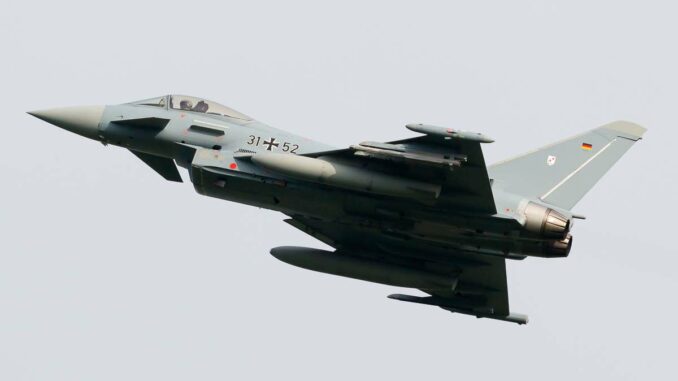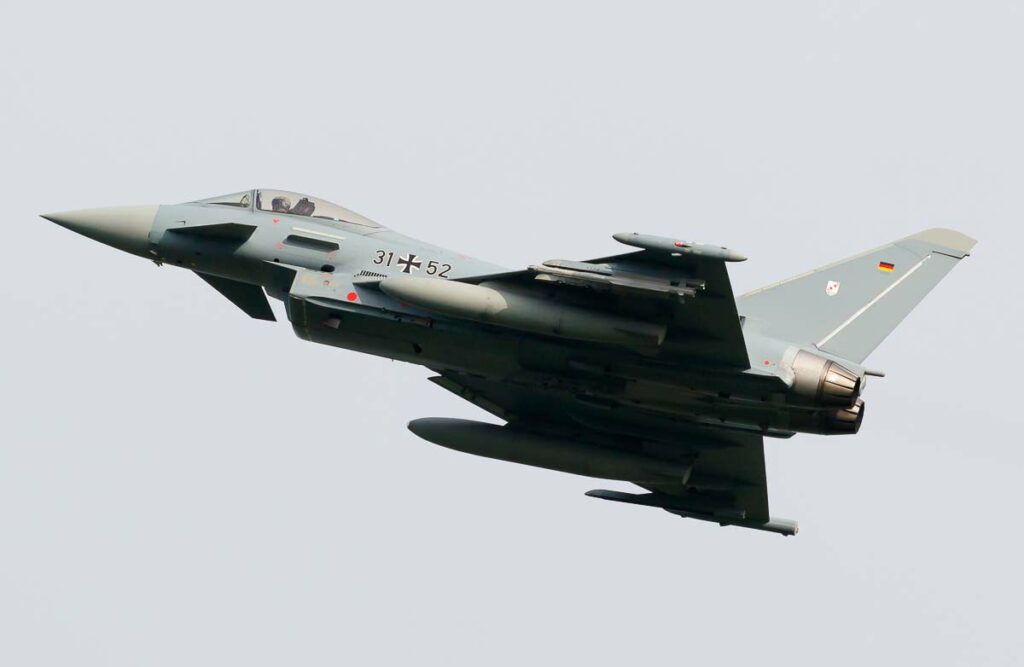
Germany is converting its Eurofighter Typhoons into Typhoon-EK jets for electronic warfare, a major evolution in its military capabilities.
Germany recently took a significant strategic decision, authorizing the conversion of 15 of its Eurofighter Typhoons into a micro-fleet of Typhoon-EK electronic attack jets. These aircraft, specialized in electronic warfare, will be equipped to detect, jam and destroy hostile ground-based radars. This development represents a significant turning point for the Luftwaffe, strengthening its capabilities in a crucial area of modern warfare.
The Typhoon-EK: A New Era for the Luftwaffe
The Typhoon-EK, designed for Suppression of Enemy Air Defenses (SEAD) missions, is a major development for the Luftwaffe. These aircraft are capable of locating enemy radars using electromagnetic sensors, and neutralizing them with powerful jammers and self-guided missiles. Their conversion represents an investment of 384 million euros, or around 27 million euros per aircraft. However, there are uncertainties as to which generations of Eurofighter will be converted.
Strategic and historical background
The Luftwaffe currently relies on Tornado ECRs for SEAD capabilities. These aircraft have been used extensively in past conflicts, such as Kosovo in 1999. However, the Tornado, which has been in service since 1979, is now being phased out, requiring a modern, more agile replacement. The Typhoon-EK therefore represents an important technological upgrade, even if it has initial limitations, notably in terms of jamming capabilities.

Consequences and strategic implications
The upgrade to the Typhoon-EK marks a strategic evolution for Germany. These jets not only enhance the Luftwaffe’s electronic warfare capabilities, but also strengthen its national defense posture. Challenges remain, however, particularly with regard to the integration of jamming systems and maintaining air-to-air refueling capabilities. Germany’s decisions reveal a preference for independent development rather than the acquisition of foreign technologies such as the American EA-18G Growler.
Other developments and technical constraints
The Typhoon-EKs, while promising, face a number of technical challenges. Their initial configuration focuses mainly on self-defense jamming, with no escort jamming capability. What’s more, conversion could require costly and technical modifications, notably to fuel tanks and weapon-carrying points.
Germany’s initiative to convert its Eurofighter Typhoons into Typhoon-EK electronic warfare aircraft marks a significant step forward in its military capabilities. Although this decision presents technical and strategic challenges, it demonstrates Germany’s commitment to strengthening its national defense and maintaining a technological edge in modern warfare. Further development and optimization of the Typhoon-EK will be essential to meet future needs and evolving threats in the international theater.
War Wings Daily is an independant magazine.